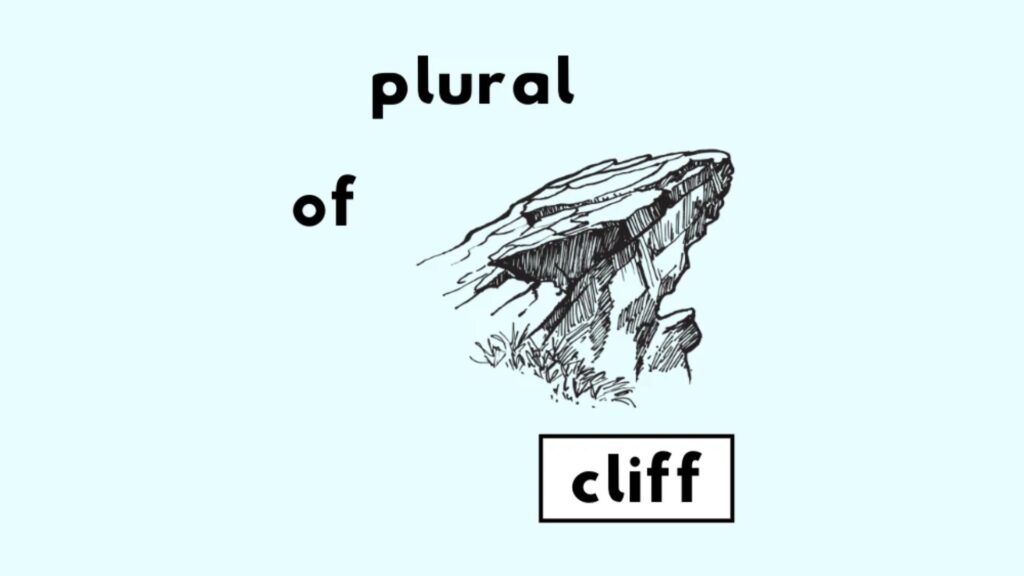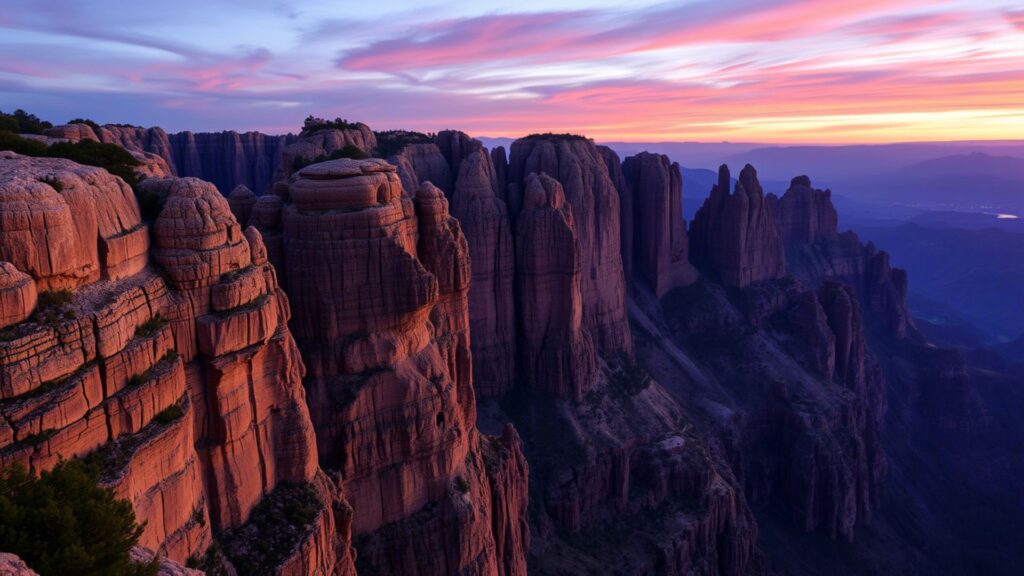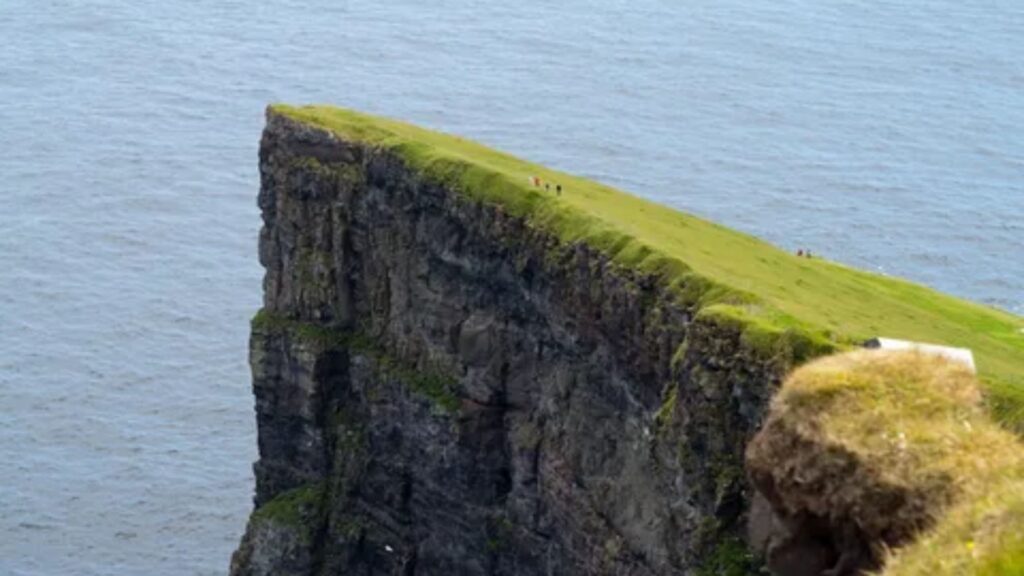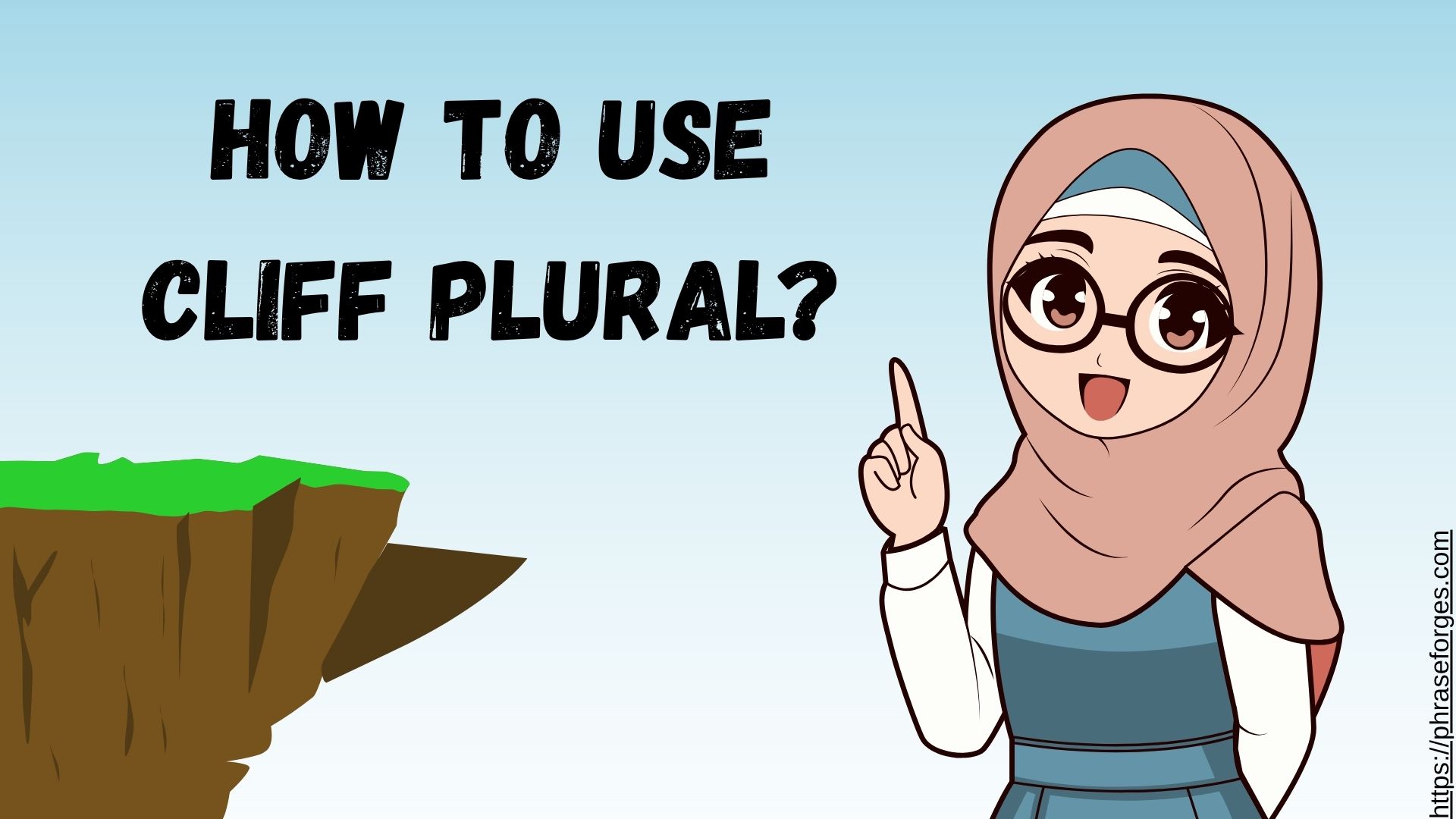When you think of the word “cliff,” stunning images of steep rock faces along a coastline or towering over a river probably come to mind. But when it comes to grammar, many people wonder: What’s the correct cliff plural form? Do we say cliffs or is there a special rule, like the one we use for words ending in –f (such as “wolf → wolves”)?
This guide breaks it all down. We’ll cover the plural of cliff, review pluralization rules, see where exceptions apply, and explore usage examples including real-life email scenarios.
Cliff Plural Form: The Simple Answer

The correct plural of cliff is cliffs.
Unlike some other nouns ending in –f/-fe, such as “knife → knives” or “leaf → leaves,” the word cliff follows the regular plural noun form by simply adding “-s” at the end:
- Singular: cliff
- Plural: cliffs
Here’s why: The pluralization rule for f to ves doesn’t apply to every word. Cliff is one of the exceptions to the f/ves rule and keeps its f intact when pluralized.
Usage Examples of “Cliffs”
Here are a few contextual sentences showing how to use cliff plural naturally:
- “The hikers stood in awe of the majestic cliffs along the coastline.”
- “Erosion has carved rugged cliffs above the river.”
- “Several crumbling cliffs pose a danger near the old lighthouse.”
Notice how descriptive adjectives like “rugged cliffs” or “chalk cliffs” enrich the imagery while keeping grammar correct.
Email Scenario Example:
Here’s how you might use cliffs (plural) in a real-world email:
Subject: Photo Shoot at the Bay Cliffs
Hi Rachel,
I just returned from Cornwall, and you wouldn’t believe the scenery. The chalk cliffs along the bay are breathtaking I attached a few shots for the campaign mock-up.
Do you think we can feature these coastline cliffs in next month’s travel spread?
Best,
Mark
This shows cliffs (plural) used naturally in a workplace context.
Why “Cliffs” Is Regular, Not Irregular
Some words like roof or chief also don’t follow the f to ves rule. Instead, they add “-s” just like cliff does. Compare:
| Word (Singular) | Correct Plural |
|---|---|
| Cliff | Cliffs |
| Roof | Roofs |
| Proof | Proofs |
| Chief | Chiefs |
This demonstrates how English pluralization rules can be inconsistent. If you’ve memorized the irregular plural nouns (like “wolf → wolves”), make a mental note that cliff doesn’t join that list.
Dictionary Definition of Cliff

According to most dictionaries, a cliff is defined as a “steep rock face, often at the edge of the sea.” Its etymology traces back to Old English clif, linked to *Proto-Germanic kliban, and related words like Old Norse klif and Middle Dutch klippe all tied to steep slopes or vertical faces.
These linguistic roots explain its connection to other geographical terms like bluff, escarpment, precipice, and scar.
Study Tip for Plural Memorization
If you’re learning English or teaching it, here’s a study tip for plural nouns:
- Group words by pattern. Create flashcards for f/ves pluralization exceptions like cliff, roof, and chief.
- Add visuals: Pair words like “rugged cliffs” with photos to anchor memory.
- Practice with context: Write usage examples (contextual sentences) in different tones (formal, casual, descriptive).
Email Scenario: Correcting a Common Error
Here’s how you might correct a common mistake in an email politely:
Subject: Quick Note on Report Wording
Hi David,
I noticed in the draft you mentioned “the erosion of several cliff’s edges.” Just a small fix: when referring to more than one cliff, it should be “cliffs’ edges” (plural possessive).
Everything else looks fantastic. Once this tweak is made, we’re ready to publish!
Thanks,
Elaine
This illustrates how word form (singular/plural) and possessive forms come into play.
Exceptions and Related Plurals
While cliffs is straightforward, other nouns ending in –f/-fe can trip you up. Here are comparisons:
- Leaf → Leaves (irregular)
- Knife → Knives (irregular)
- Belief → Beliefs (regular, like cliffs)
This highlights how English mixes regular plural noun forms with unpredictable irregular plural forms.
Quick Reference Table: Cliff Plural
Here’s a concise quick reference table:
| Form Type | Example |
|---|---|
| Singular | cliff |
| Plural | cliffs |
| Possessive (Singular) | cliff’s edge |
| Possessive (Plural) | cliffs’ edges |
Real-World Writing Example

If you were writing an article or travel blog, you might say:
“From the rugged cliffs of Ireland to the overhanging rock formations in Utah, each steep rock face tells a story carved by time.”
This mixes semantic entities like “rugged cliffs,” “steep rock face,” and “overhanging rock,” weaving grammar seamlessly into context.
Key Takeaways
- The cliff plural form is cliffs (not “clives” or anything irregular).
- It’s part of the exception to the f/ves rule.
- Visual examples (like majestic cliffs) make usage easier to remember.
- Related words (like bluff, escarpment, precipice) help deepen your understanding of geography terms tied to “cliff.”
✅ Final Thought:
The plural of cliff is simple once you see it in action. Pairing grammar with visuals, contextual sentences, and even quick email examples can lock it in for good. Whether you’re describing crumbling cliffs in a novel or emailing about a photo shoot, you’ll now know exactly how to use it.

